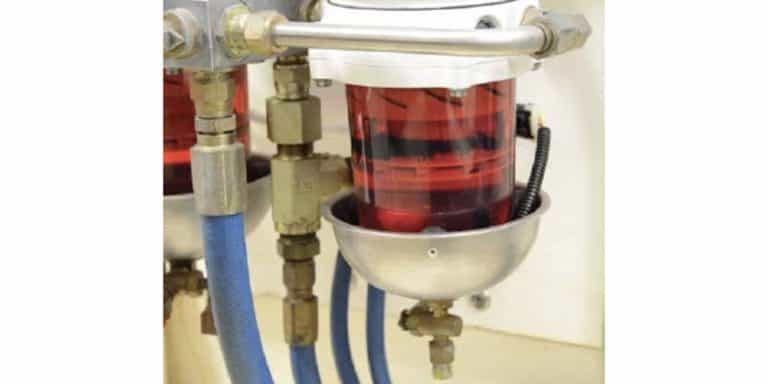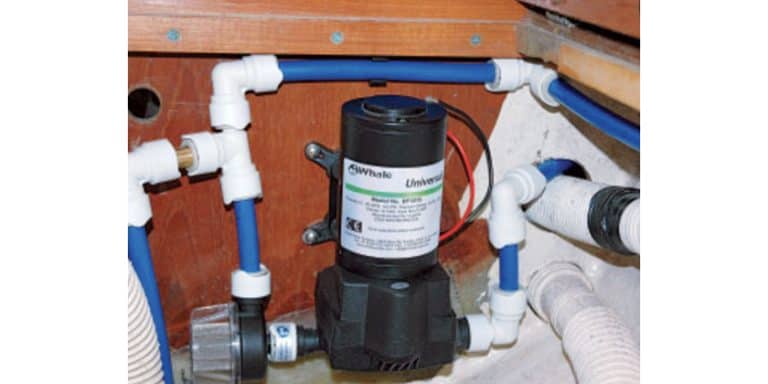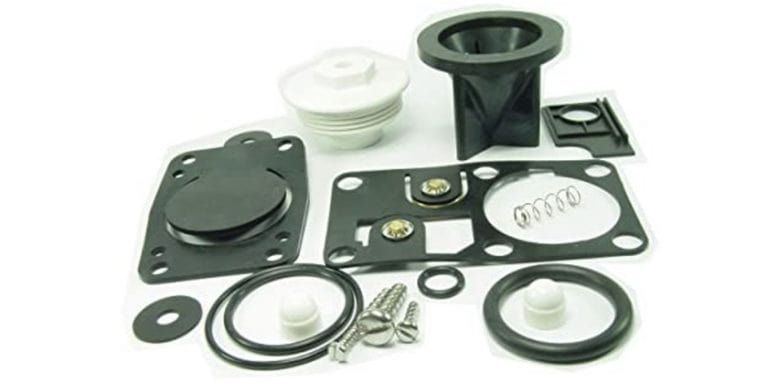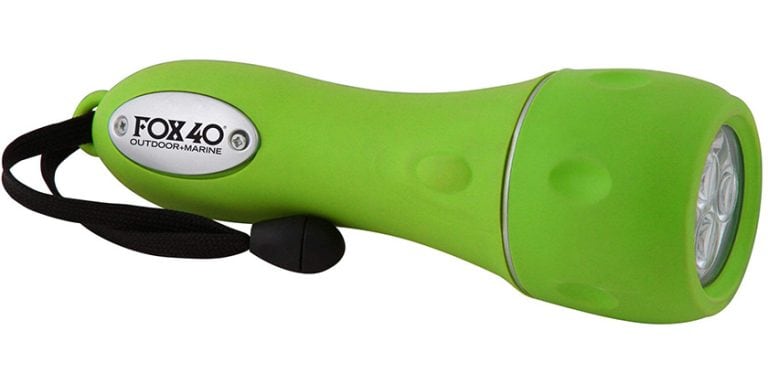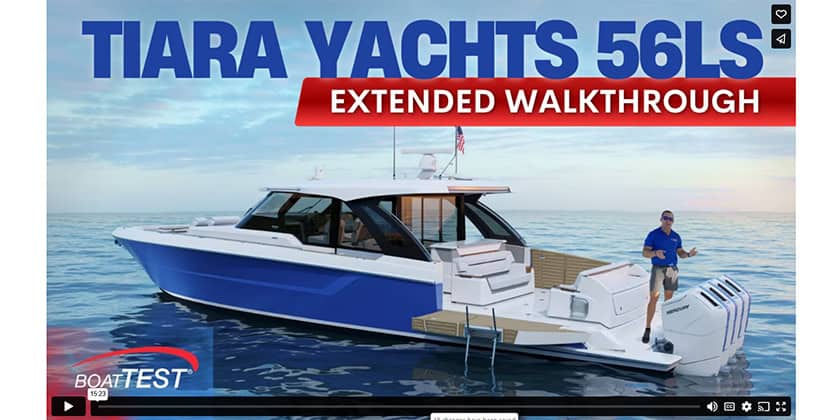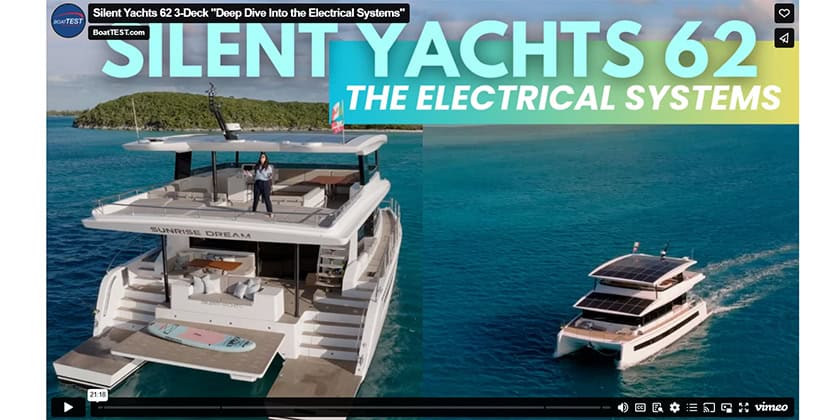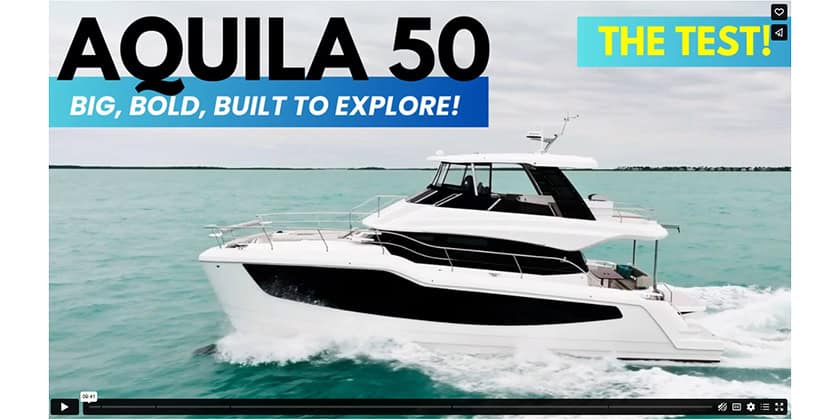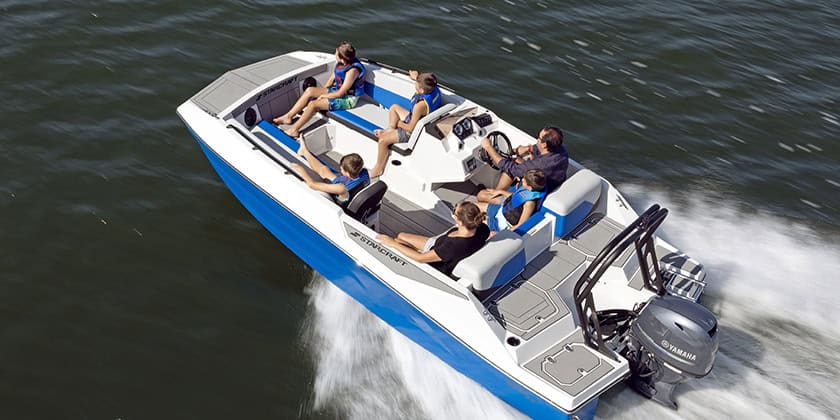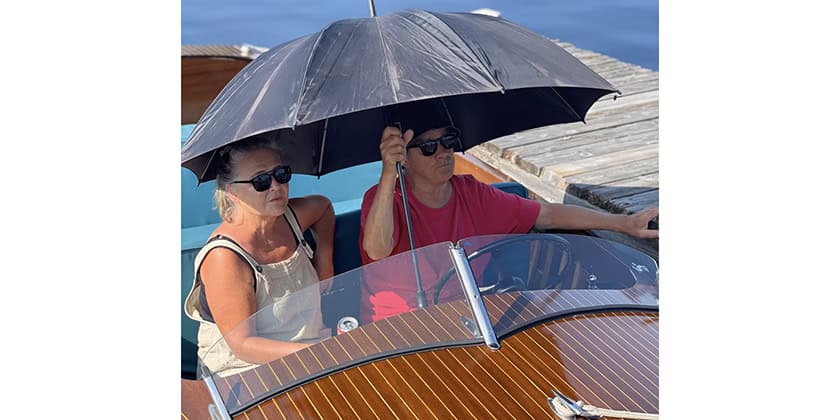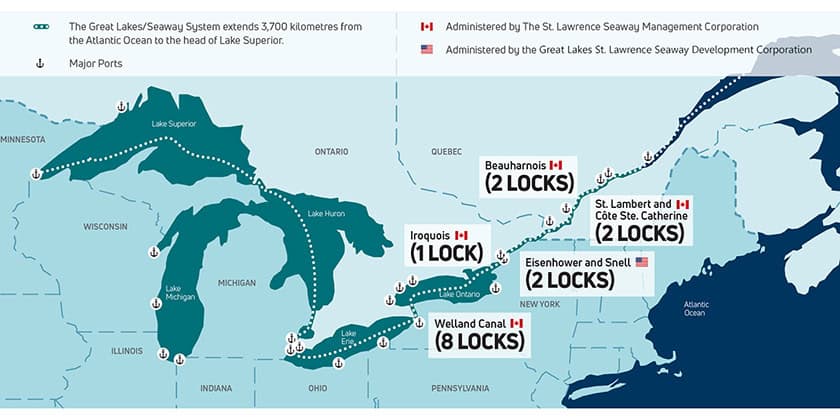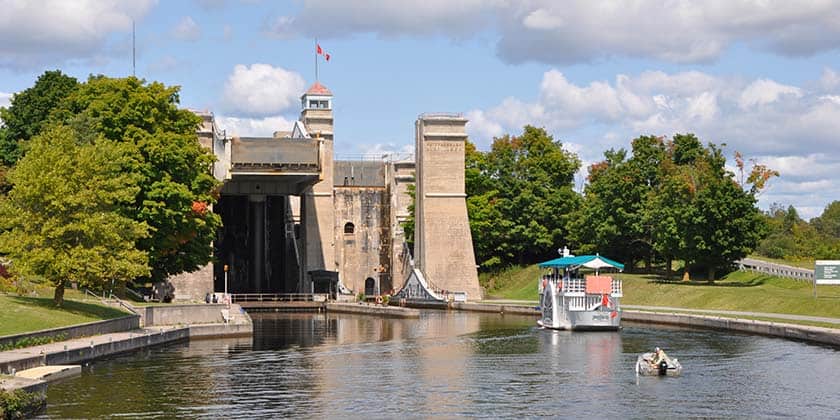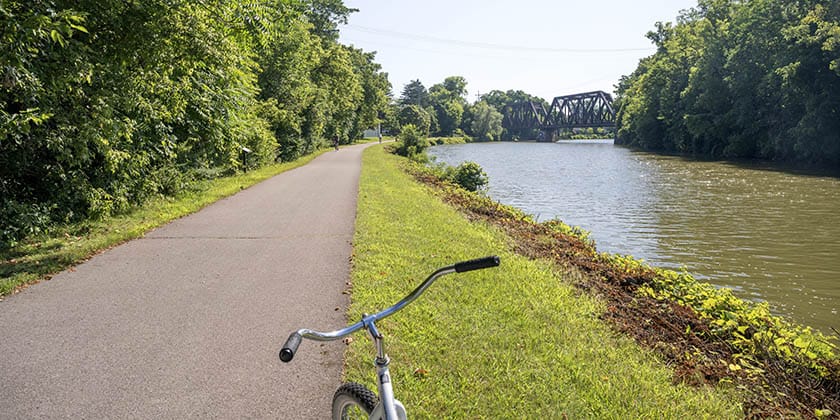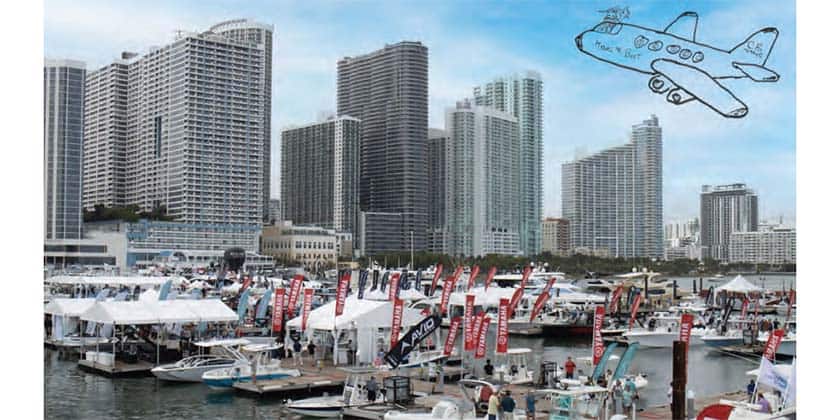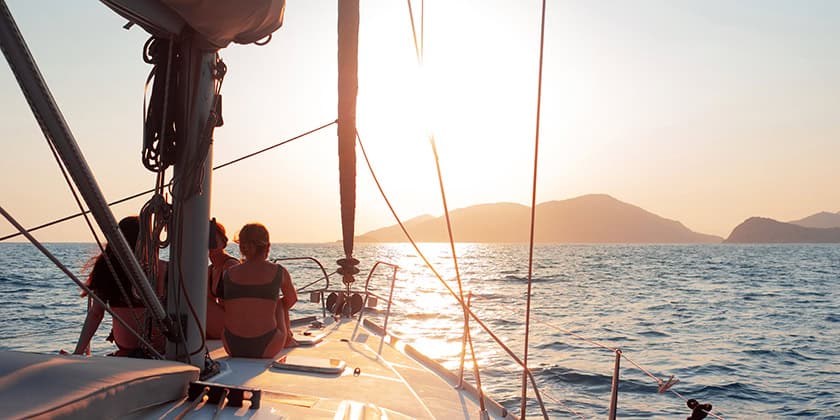Ask Andrew: Batteries and Battery switches
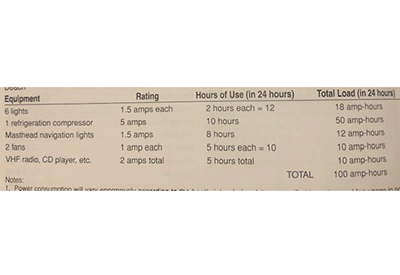
May 23, 2019
A chart showing the method to determine Amp-Hour requirements for house batteries
As a busy marine mechanic, I tend to have the same or similar conversations often, and they’re quite seasonal. After engine check-overs and start-ups, conversations often are about batteries and battery switches. They tend to be one of those things that boaters use regularly, and know what they need to know to get their boat off the dock, but without understanding the ‘Why’ or the ‘How’.
I often watch boat owners hop into their vehicle and head to a Costco (or Wal-Mart or Canadian Tire) to buy a new battery. But to make the most out of your boating experience, not just any battery will do.
There are so many options and considerations. And the words that batteries are labeled with can be a source of confusion. Lets avoid ‘Maintenance Free’ or ‘Conventional’ or ‘AGM’ for the purposes of this conversation, and focus on what the battery is doing, and what you need to do to choose the right battery for your needs.
Lets focus on two terms that are of paramount importance: ‘Cranking’ and ‘Deep Cycle’. In boat electrical lingo, these are also called ‘Starter’ and ‘House’
A Cranking (or Starting) battery, as the name says, is used to start the engine. It’s designed to deliver a very high current to the starter motor, for a few seconds at a time. A Deep Cycle (or House) battery is used to power everything else: lights, stereo, horn, GPS, Navigation, etc). It delivers lower current over a much longer period (hours), in order to run house systems on the boat.
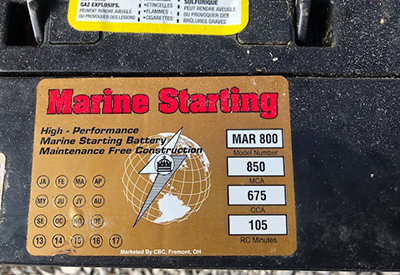 A starting battery with CCA (cold cranking amp) rating
A starting battery with CCA (cold cranking amp) rating
So, how do you choose a new battery? After determining if the battery will function as a Starting battery, or a House battery the next issue is to determine the rating that is needed.
If a cranking battery is undersized, it won’t deliver enough amps to properly turn the engine. An oversized battery will cost more, without delivering any additional benefit. To determine the correct rating, compare the engine (and starter motor) CCA (Cold Cranking Amp) requirements. As an example, a 3.0L Mercruiser engine (found on many 18-20’ bowriders), requires a 375 CCA battery rating (This info is found the engine installation manual.) The battery chosen should be rated as a 375 CCA battery.
A deep cycle battery (or battery bank – multiple batteries strung together to provide more power over time) should be compared with the amperage requirements of the devices used on board (together, at once). Consider: lights, stereo, GPS, and bilge pumps. Next, consider the duration that these items will be used. Will you be at anchor for a few hours at a time? Or will you be away from dock and running appliances for a week, with a once daily recharge? So – consider the total number of Amps used, and the duration that they will be used for (calculated as Amp-Hours). Choose a Deep cycle battery, rated at the intended Amp-Hours calculated. The attached chart shows a simple way to make these calculations.
So: You have a starting battery and a house battery chosen and ready to be installed, how are they used practically?
Boats with more than one battery (more than a simple starting battery) will have a battery switch installed. In a typical set-up, Battery 1 is the Starter battery, and Battery 2 is the House battery. The battery switch allows you to select between ‘Off’, ‘Batt 1’, ‘Batt 2’ and ‘Both’.
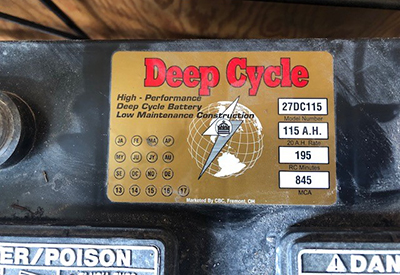 A House battery showing the Amp-Hour rating
A House battery showing the Amp-Hour rating
In an ideal world, you’ll step aboard on a beautiful weekend morning, and turn the switch to ‘Batt 1’ – this allows you to engage your blower, bilge pump, and to start your engine using the Cranking/Starting battery. Once you’ve pulled away from dock, felt the wind in your hair and have anchored at the perfect location for sunbathing, fishing, and a fun-in-the-sun, the switch should be turned to ‘Batt 2’ (once the engine is off). The will allow any battery-draining activities (lights, Stereo, charging of cell phones, fridge, etc) to be powered from the House battery. This serves a dual purpose of stopping you from accidentally draining the Starter battery, preventing you from getting home!
Once you’re ready to raise anchor and head back to your mooring, the battery switch should be turned back to ‘Batt 1’ in order to start the engine.
The ‘Off’ position should always be used when leaving the boat for any length of time, and the ‘Both’ selection should be reserved for emergencies (when one battery is too low to function on it’s own). As a side note, critical electronics (like bilge pumps) should be wired directly to the batteries – so that the switch can be left ‘Off’, while still allowing the bilge pump to function.
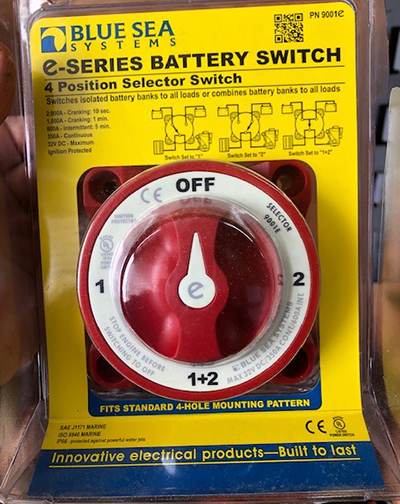 An example of a battery selector switch
An example of a battery selector switch
Battery and power issues can be extremely frustrating – it can mean loss of functionality, wasted summer weekends, and added expense of replacement. Using batteries and switches appropriately can cut down on frustration and lead to even greater enjoyment!
 Andrew McDonald is the owner of Lakeside Marine Services – a boat repair/maintenance firm based in Toronto. Andrew has worked in the marine industry for 12 years and is a graduate of the Georgian College ‘Mechanical Techniques – Marine Engine Mechanic’ program.
Andrew McDonald is the owner of Lakeside Marine Services – a boat repair/maintenance firm based in Toronto. Andrew has worked in the marine industry for 12 years and is a graduate of the Georgian College ‘Mechanical Techniques – Marine Engine Mechanic’ program.
Questions or comments for Andrew? Email him directly via: askandrew@lakesidemarineservices.ca

